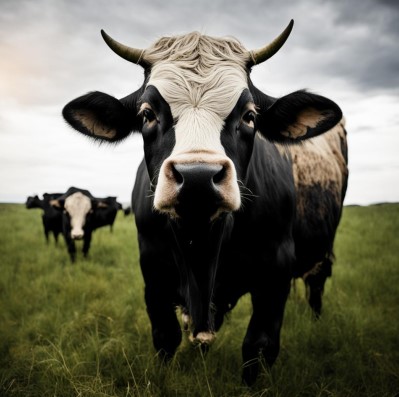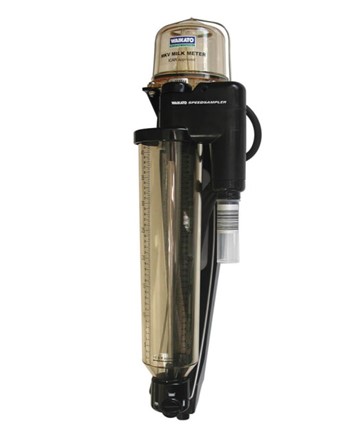Ministry of Agriculture: Russia occupies a very important and noticeable place in the global meat industry
Presenter Alexey Melnikov discussed the future prospects and opportunities of the industry with the HEAD of the executive committee of the National MEAT Association Sergey Yushin in the program "World. Opinion".
According to the Ministry of Agriculture, RUSSIA has become the fourth country in the world in terms of meat production during the decade of the food embargo. Livestock production increased by 35.6%, poultry - by 36.6%. Presenter Alexey Melnikov discussed the future prospects and opportunities of the industry with the head of the executive committee of the National Meat Association Sergey Yushin in the program "World. Opinion".
Impressive pace. I remember what cowsheds, piggeries, and poultry houses looked like 15-20 years ago. Not just abandoned, but with removed roofs, without gates, without windows. Now the industry is developing.
- Yes, indeed, Russia's successes in the meat industry are obvious. This is one of those industries that shows, without exaggeration, fantastic results. This is, of course, the result of the enormous long-term work of investors, ordinary employees of enterprises, government agencies, that is, federal authorities , the government itself. The country's leadership has been very involved in this particular industry as part of the development of the agro-industrial complex. We have proven that we can produce meat at the level of the world's leading companies. Today, Russia occupies a very important and noticeable place in the global meat industry. For types of meat such as poultry , we are in fourth place. For turkey, we have generally reached second place. And, by the way, turkey production has grown fourfold over the past 10 years. Moreover, this industry is also actively entering EXPORT markets. Our turkey can be bought even in Africa. In CHINA, we are the largest supplier of turkey, if not the only one.
As far as I know, I came across information somewhere that almost 100% of the turkey supplied to China is Russian production.
- Absolutely right. But, of course, we also had high growth rates in pig farming, we are also in fourth place there. Sometimes they write that it is fifth, but then they count the EU as one country, which is generally wrong. The EU is not one country. The EU is Germany , Spain, and so on. We do not count the Eurasian Union, but we count Russia. Russia is fourth in poultry meat, fourth in broiler meat, and is among the top ten largest beef producers.
Of course, it would be a significant exaggeration to say that this happened in just 10 years. This is the result of consistent work by all government agencies and businesses over the past 20 years. I am absolutely sure that if it were not for the first decade from 2004 to 2014, within the framework of which we implemented the national project for the development of the agro-industrial complex, and within it the development of livestock farming. Then the state program for the development of the agro-industrial complex began from 2008 to 2012 and was continued from 2012 to 2020. All these measures ultimately made it possible to make such a difficult decision to introduce restrictions on the supply of food from countries that imposed sanctions against the Russian Federation. I am deeply convinced that if it were not for the first decade, this decision would not have been made.
It turns out that at a certain point everything came together in such a way that on the one hand there are already programs and systemic measures of state support, and, on the other hand, there are unfriendly relations with our foreign partners. And these counter-sanctions gave an additional incentive to start our own production.
- For certain industries, for example, for the production of MILK and dairy products, this was a huge, huge effect. For the meat industry, perhaps, it was smaller. Because in addition to the countries that imposed sanctions against the Russian Federation, the same CANADA , the usa , Australia , the European Union, there are such powerful world leaders in meat exports as Brazil , India, Uruguay, Paraguay, Argentina. They all remained on our market and could easily supply within the framework of the tariff policy that the state implemented. So we developed our industry in conditions of fairly intense competition. And I would like to emphasize that the huge success we are talking about in the meat industry is still the result, in many ways, of the real, dedicated work of all employees of poultry farms, pig farms, farm workers, slaughterhouses, and cattle cutting plants. These are people who compete in a very serious fight with world leaders.
I will periodically refer to various statistics. Last year, meat and meat product consumption in Russia set a new historical record: an average of 98 kilograms per person. Is there some breakdown of what is included in these 98 kilograms? What do our fellow citizens prefer?
- First, I would like to clarify that these are the results of a household consumption study , not statistical data, although Rosstat offers them to our attention. But the statistics are such that this year there will be 83 kilograms of meat and meat products per person per year. Is this a lot or a little? This is the level of the rich countries of the world. On average, only 42-43 kilograms per person per year in the world. So we are a country of meat eaters. But in our meat basket, the breakdown is as follows: approximately 43% is poultry, of which more than 90% is broiler meat, that is, chicken . 38% is pork . By the way, pork consumption is growing, and its share is displacing other types of meat. Over the past eight years , pork prices have increased the least . Beef is approximately 16-17%. And the rest are other types: lamb , goat, some exotic ones. So we have a completely rational distribution by types of meat, taking into account economic accessibility. Because it is clear that beef is an expensive product all over the world. And in Russia, by the way, it is not that expensive compared to pork and poultry.
Therefore, beef consumption in Russia is almost 50% higher than in the world. Again, looking back at recent history, not so long ago Russia was one of the largest meat importers in the world. Now we are among the leaders of net exporters. And in practice, what does this mean for the economy and for the industry?
- Absolutely right. 20 years ago, Russia imported about 3-3.5 million tons of meat and meat products annually. This is calculated in dollars. Let's count dollars then. This import cost our economy more than 10 billion dollars. Now Russia still imports about 600 thousand tons of all types of meat. But a very large part comes from Belarus, which is in our Union State and in the Eurasian Union. Therefore, can this be considered a real import? And Russia has really been exporting meat and meat products for four years in a row, rather than importing them. This year, the excess will be approximately 50% over import.
What does this mean? First of all, it means that those parts of carcasses and products that are not in great demand on the Russian market, for which our consumers pay little, we export to other countries, where they pay several times more. Because this is part of the national culinary culture. And we receive the corresponding payment for this. And here the profitability of production increases, which allows us to keep the price at a lower level. Without exports, we would be forced to sell certain parts at a low price in Russia, because they are not in demand. And this is practically almost the disposal of goods. And in order to ensure the profitability of production, we would have to raise prices for meat, which is popular in Russia. Therefore, exports allow us to ensure balance.
But, besides, any supply of agricultural products to certain countries is not only the development of economic ties, but also the development of political ties. And, by the way, the opening of various meat markets, including in China, in the Middle East happened largely due to the active participation of the government and the country's leadership. Such a high priority is given to our industry that the president, the prime minister, and the deputy prime ministers are all involved in this work to open the market for our agricultural products.
In your opinion, what is currently the biggest obstacle to the further development of the meat industry, and how can this problem be solved?
- In short, in general, poultry farming and meat farming will develop normally at the pace we need. Our main snag today is the development and production of cattle meat . And what hinders us, first of all, is very low profitability. We are used to the fact that beef in Russia is very cheap. Since the times of the USSR, some people have had the mental picture that beef on the bone is cheaper than cooked sausage , but this is nonsense. Beef is an expensive meat, we must understand this. And until there is profitability, farmers or large investors will not go there. We have several projects that literally hold beef cattle breeding together. But, unfortunately, the low purchasing power in relation to beef is holding back the development of this industry. Although it has a very large potential, both for the domestic and foreign markets. The world will need more and more beef. And Russia needs to think today about what needs to be done to become a major beef exporter in 20 years. Although today we already supply it to Africa and China.
Read together with it:
- Парагвай: Экспорт субпродуктов является растущей отраслью и уже достиг 95,4 млн долларов СШАЭкспорт говяжьих субпродуктов в этом году значительно вырос. К концу августа выручка составила 95,4 млн долларов США по сравнению с 54,6 млн долларов США на тот же конец прошлого года. По данным SENACSA, в конце августа этого года было экспортировано 51 миллион килограммов мяса по сравнению с 33,7 миллиона килограммов на конец того же месяца прошлого года. Экспорт субпродуктов увеличился на 51,3%....
- Новые горизонты сотрудничества: Россия и Аргентина обсуждают совместный доступ на рынки продукции животного происхожденияОдной из ключевых тем конференции стал контроль за производством ветеринарных препаратов в Аргентине. Аргентинская сторона представила свою систему контроля, включающую Управление ветеринарных продуктов и Управление лабораторий животных. Эти организации обеспечивают высокие стандарты безопасности, так как каждая производственная единица подвергается проверкам каждые 3-5 лет и зарегистрирована в ин...






























































